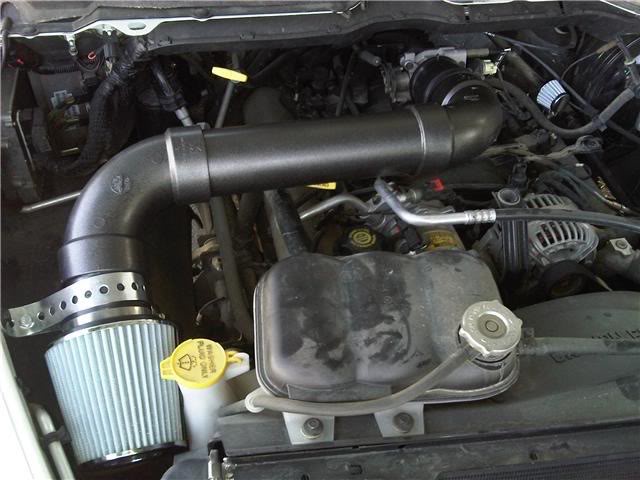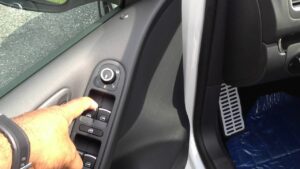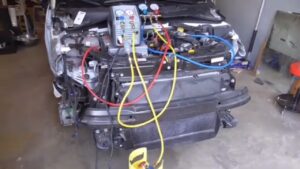Are you looking to enhance your car’s power without breaking the bank? Making a Cold Air Intake (CAI) can do just that! This exciting DIY project can boost your car’s horsepower, make it run smoother, and even save you money. Let’s dive in and learn how to do it!
- Why Cold Air Intake?: Cold air is denser with oxygen. More oxygen means better combustion. Better combustion equals more power!
- Save Money: DIY means no labor costs. Plus, it’s cheaper than buying a pre-made kit.
- Fun Project: It’s rewarding. You get to learn about your car. It’s also quite fun to do!

Credit: dodgeforum.com
Materials Needed:
| Material | Quantity | Description |
|---|---|---|
| PVC pipes or aluminum tubes | 1 Set | These will form the intake path. |
| Cone air filter | 1 | To filter the air going into the engine. |
| Silicone couplers | 2-3 | For connecting the pipes securely. |
| Hose clamps | 4-6 | To tighten the couplers in place. |
| Intake mounting bracket | 1 | To stabilize the intake tube and filter. |
| Saw | 1 | For cutting PVC pipes or aluminum tubes. |
| Screwdriver | 1 | To tighten hose clamps and other fixings. |
| Drill | 1 | May be needed to make mounting holes. |
Step-by-Step Guide:
Step 1: Planning: First, check where your current air intake is. Plan how to route the new intake to get the coldest air. Avoid areas that get hot, like near the engine or exhaust.
Step 2: Removing the stock intake: Carefully take off your old intake parts. Keep the parts safe. You might need them to get sizes or for reference.
Step 3: Measuring and Cutting: Measure how much tubing you need. Cut the PVC or aluminum tubes to size. Always double-check before you cut. It’s important to get this right.
Step 4: Dry Fit: Without attaching anything, lay out your new intake. Make sure everything fits nicely. Make small changes if needed.
Step 5: Attaching the Filter: Put the cone filter on one end of your tubing. Secure it with a hose clamp. Make sure no air leaks out.
Step 6: Connecting the Tubes: Use silicone couplers to join your pipes together. Tighten hose clamps on both ends. Keep it snug but don’t over-tighten.
Step 7: Mounting the Intake: Secure the whole setup with the mounting bracket. If you need to drill holes, be careful. Make sure the intake is steady.
Step 8: Final Check: Look over your new intake. Everything should be tight and secure. Start your car to test it. Listen for odd sounds. If it’s good, go for a small drive!

Credit: nasaspeed.news
Safety Tips:
- Work in a well-lit, ventilated space.
- Keep your hands and tools dry to avoid slips.
- Wear safety glasses when cutting and drilling.
- Never start your engine without the air filter attached.
Benefits of Cold Air Intake:
- Better engine performance.
- Improves fuel economy.
- Enhances throttle response.
- Makes your engine sound cooler.
Considerations:
While a DIY cold air intake can save you money, it comes with risks. If not done correctly, it can harm your car. Always gather good information before you start. It’s okay to seek help from a friend or professional. Keep in mind, some additions to your car may affect its warranty or insurance. Check those before you begin your project.
Conclusion:
Building your own cold air intake is a project that can give you satisfaction and performance gains. It’s a practical way to learn about your vehicle’s system. Plus, it can improve the efficiency of your engine. Follow this guide, stay safe, and enjoy your newly improved car!
Remember: This guide is a starting point. Cars can vary a lot. Some steps might change for your specific model. Always customize the process to fit your car and your needs.
Frequently Asked Questions On Do It Yourself Cold Air Intake
What Is A Cold Air Intake System?
A cold air intake system is a car performance enhancement that channels cooler air into the engine for improved combustion efficiency and power.
Can Diy Cold Air Intakes Improve Performance?
Absolutely, a well-constructed DIY cold air intake can enhance airflow and potentially boost your vehicle’s performance and throttle response.
What Materials Are Needed For A Diy Intake?
To build a DIY cold air intake, you’ll need tubing, an air filter, clamps, brackets, and possibly silicone couplers or rubber connectors.
How Does Cold Air Intake Affect Engine Health?
By delivering cooler, denser air, a cold air intake can improve engine combustion, potentially leading to better engine health and longevity.
Is A Homemade Intake System Cost-effective?
Crafting a homemade intake system can be cost-effective compared to purchasing a commercial kit, as long as quality materials are used and it’s properly installed.





